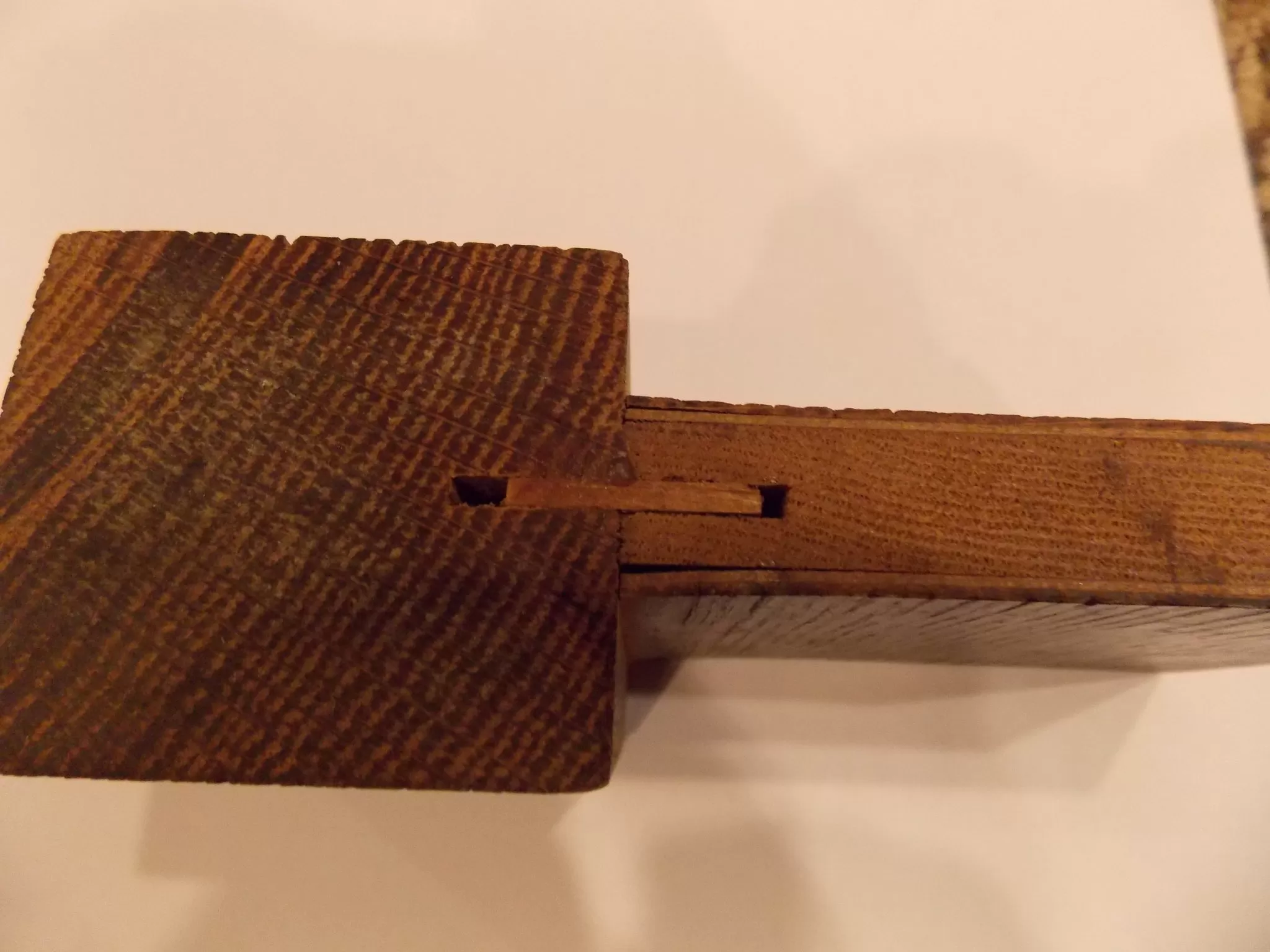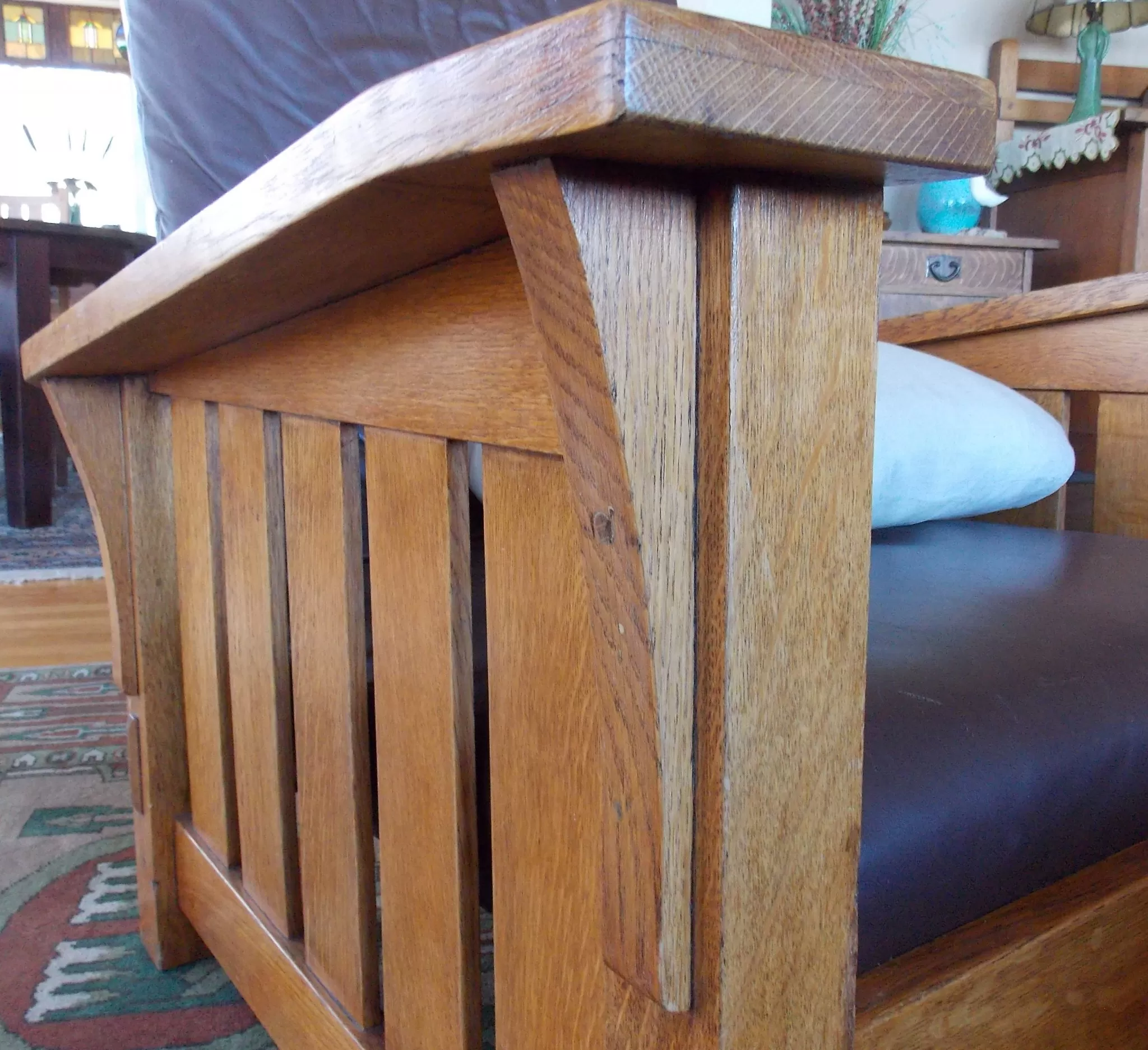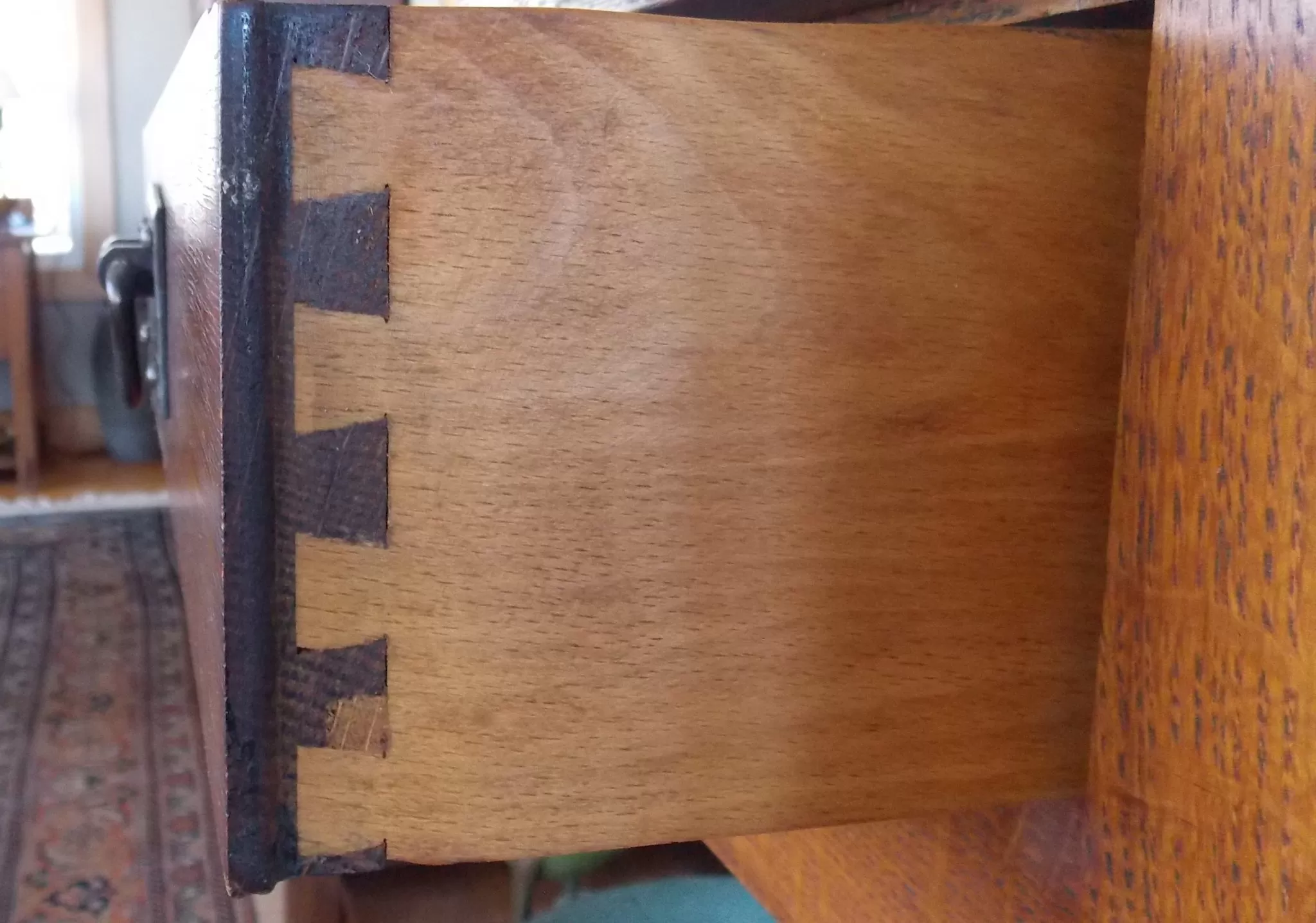Unsigned? Perhaps not . . . .
A few weeks ago, when I wrote about a Gustav Stickley-Grueby tile top table that was up for auction here in Asheville, an out-of-town friend called asking if it had water-damaged legs and, if so, if any wood had been cut off the bottoms of them.
I was able to answer without hesitation than the water damage was superficial and that the legs were unscathed, for as I was inspecting the table I had turned it over and noted that the bottom of each leg still had its original beveled edges.
Now this particular tile top table still had its red Stickley decal, but had it been erased by a careless refinisher, those beveled bottoms to the four legs would have been one of many pieces of evidence that would have proven that it had come from the Craftsman Workshops of Gustav Stickley. This got me to thinking about what other evidence you can collect when looking at an unsigned piece of furniture to determine which firm made it.
First, don’t think you can learn identification traits for every Arts and Crafts furniture maker. Instead, pick one or two firms that interest you the most and start by purchasing any reprints of their original furniture catalogs. The best place to start is at www.TurnOfTheCenturyEditions.com.
Second, study examples of your furniture maker at the websites of major Arts and Crafts auction houses and galleries, for here you can see color photographs, often including construction details.

Third, as you do, learn to recognize the type and style of hardware your furniture maker preferred. While exceptions always exist, many firms remained consistent in their style of hardware over the course of several years, such as this hammered pull on a Gustav Stickley drawer.

Fourth, determine which construction techniques your furniture maker used on a regular basis. For instance, while L. & J.G. Stickley and Charles Limbert often used a “spline” – a narrow strip of wood glued into the edges of two adjacent boards (see photo above) – Gustav Stickley preferred a shallow tongue-and-groove technique (pictured on our Facebook page).

Fifth, when they appear, play close attention to “corbels,” those functional and decorative brackets helping to support the wide arms on chairs or the overhanging tops on tables and some case pieces. Again, many firms had their own style and shape of corbel which they preferred not to change.

Sixth, do the same for the diameter of any pegs holding joints together, as well as for the shape, size, and bevel on any exposed tenons or keyed tenons (pictured above on a Gustav Stickley bookcase).

Seventh, when the opportunity presents itself, study internal construction techniques, such as seat corner brackets, drawer joinery, fasteners used to attach table tops, methods of supporting the back of a Morris chair, beveled feet, etc.
This list is by no means complete, so if you have a suggestion to add, please click on our Facebook link and share it with our readers.
Good Luck!
Bruce Johnson
